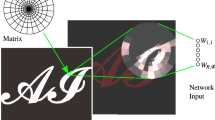Abstract
This paper proposes a novel algorithm using an artificial neural network for modeling simultaneously both a 3-D flow velocity vector and a concentration field. The neural network is trained so that four outputted values of the network, three components of a 3-D velocity vector and a concentration of substances such as air pollutants or bacilli, agree with measured ones and additionally the continuity and diffusion equations are satisfied in the flow field. An approximate model for the velocity and concentration field can be constructed in the neural network from sparsely measured data. When any 3-D position, (x, y, z), is inputted to the neural network model, it outputs a 3-D velocity vector and a concentration at the position. The entire 3-D velocity vector and concentration field, therefore, can be easily estimated using the model. To validate the algorithm, the smoke concentration distribution estimated from a very limited set of measured data is compared with the measured one in which most of the data is unused for the modeling. Even from sparsely measured velocity vectors and smoke concentrations, the novel algorithm gives the entire concentration distribution whose flow characteristics are almost similar to the experimental result.
Similar content being viewed by others
References
Dickerson M H. MASCON-A Mass Consistent Atmospheric Flux Model for Regions with Complex Terrain.Journal of Applied Meteorology, 17-3 (1978), 241–253.
Fujisawa N, Watanabe M and Hashizume Y. Visualization of Turbulence Structure in Unsteady Non-Penetrative Thermal Convection Using Liquid Crystal Thermometry and Stereo Velocimetry.Journal of Visualization, 11-2 (2008), 173–180.
Kimura I, Morino T, Furukawa T, Kaga A and Kuroe Y. Estimation of Three-Dimensional Velocity Vector Fields Using Neural Networks.CD ROM Proc. of the Millennium 9th International Symposium on Flow Visualization, 166.1–9, (2000).
Kimura I, Morino T, Furukawa T, Kaga A and Kuroe Y. Neural Net-Based Reconstruction of 3-D Velocity Vector Fields from Deficient Measured Data,CD ROM Proc. of the 3rd Pacific Symposium on Flow Visualization and Image Processing (PSFVIP-3), F3125, (2001).
Kuroe Y, Mitsui M, Kawakami H and Mori T. A Learning Method for Vector Field Approximation by Neural Networks,Proc. of 1998 IEEE International Joint Conference on Neural Networks (IJCNN’98), 2300, (1998).
Kuroe Y and Kawakami H. Vector Field Approximation by Model Inclusive Learning of Neural Networks.Artificial Neural Networks— ICANN 2007,Lecture Notes in Computer Science, 4668, Springer-Verlag, (2007), 717-727.
Reungoat D, Riviere N and Faure J.P. 3C PIV and PLIF Measurement in Turbulent Mixing -Round Jet Impingement—.Journal of Visualization, 10-1 (2007), 99–110.
Shiota T, Yamaguchi K, Kaga A, Kondo A and Inoue Y. Combined Technique of PIV and CFD Using Cost Function and Comparison with FDDA.CD ROM Proc. of the Millennium 9th International Symposium on Flow Visualization, 205.1–9, (2000).
Author information
Authors and Affiliations
Corresponding author
Additional information
Ichiro Kimura: He received his M.S. degree in instrumentation engineering from Kobe University, Kobe, Japan in 1972 and his D.E. degree in mechanical engineering for industrial machinery from Osaka University, Osaka, Japan, in 1983. He was a Research Associate from 1972 to 1984 and an Associate Professor from 1984 to 1993 of Instrumentation Engineering at the Faculty of Engineering, Kobe University. He is currently a Professor of Mechatronics at Osaka Electro -Communication University, Osaka, Japan. His current research interests are Neural-net Based Quantitative Flow Visualization and Modeling of Visual Neuron.
Akihiro Yoke: He received his B.S. degree in electromechanical engineering in 2005 and his M.S. degree in mechanical and control engineering in 2007 at Osaka Electro-Communication University, Osaka, Japan.
Akikazu Kaga: He received his B.E. degree in 1969, his M.E. in 1971 in Mechanical Engineering, and his D.E. degree in 1985 in Environmental Engineering from Osaka University. He has been working in Osaka University from 1971 as a research associate, from 1988 as an associate professor and from 2000 as a professor. His current research interests are Airflow Measurement using Flow Visualization and Image Processing, and the Analysis of the Behavior of Detrimental Chemicals in the Environment.
Yasuaki Kuroe: He received his Ph.D. in industrial science from Kobe University, Kobe, Japan in 1982. In the same year he joined the faculty of Department of Electrical Engineering, Kobe University as a Research Associate. In 1991, he moved to Kyoto institute of Technology as an Associate Professor and he is currently a Professor at the Department of Information Science, Kyoto Institute of Technology, Kyoto, Japan. His research interests are in the areas of Neuro-Computing and Computational Intelligence, Control Theory and its Application, and Computer-Aided Analysis and Design.
Rights and permissions
About this article
Cite this article
Kimura, I., Yoke, A., Kaga, A. et al. Neural-net based modeling of velocity and concentration fields. J Vis 12, 73–80 (2009). https://doi.org/10.1007/BF03181945
Received:
Revised:
Issue Date:
DOI: https://doi.org/10.1007/BF03181945




